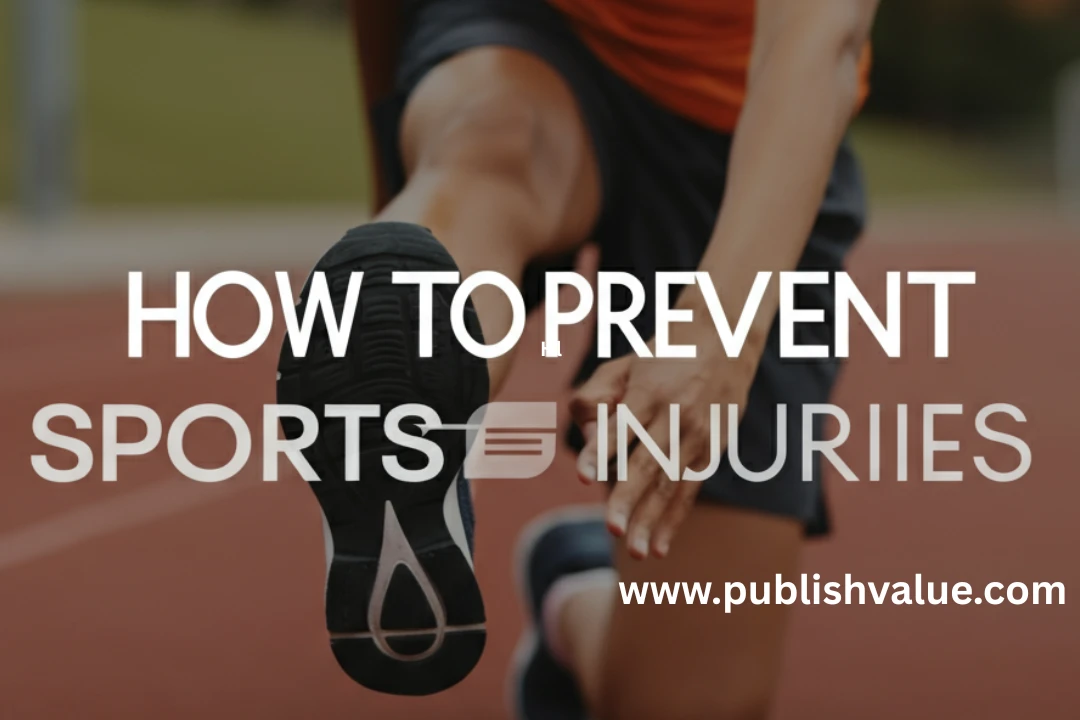
How to Prevent Sports Injuries: A Complete Guide
Share0Playing sports is one of the best ways to stay healthy, build friendships, and have fun. But nothing brings your progress to a halt faster than an injury. No matter if you’re just starting a new sport or have years of experience, learning how to prevent sports injuries can keep you active, pain-free, and at your best.
Let’s look at some simple, proven ways you can keep your body safe and strong, so you can spend more time on the field and less at the doctor’s office.
The Importance of a Proper Warm-Up
It can be tempting to jump right into the action, but a good warm-up is one of the best sports injury prevention tools you have. Warming up safely raises your heart rate, unlocks stiff joints, and boosts blood flow, preparing your muscles for harder work. Think of it as flipping the switch from “rest” to “ready.”
Dynamic Stretching
Begin every session with a few minutes of dynamic stretching—these are active movements like high knees, butt kicks, or walking lunges that ease your body into motion and help reduce the risk of pulled muscles.
Activity-Specific Movements
Add movements that mimic your chosen sport. For example, a soccer player might jog in place and practice quick direction changes, while a swimmer might circle their arms and stretch their shoulders.
Master Correct Technique and Form
Using proper form is a cornerstone of avoiding sports injuries. Sloppy technique can put you at risk for pulled muscles, twisted joints, or even chronic injury over time. Whether you’re lifting weights, shooting hoops, or working on your dance routine, good form protects your body.
Seek Professional Guidance
If you’re unsure about your technique, ask a coach or experienced teammate for feedback. Don’t be afraid to ask questions or seek a demonstration—small tweaks in your form can make a world of difference.
Start with the Basics
Focus on mastering essential skills first. Skipping ahead to advanced moves before you’re ready can set you up for injury down the road.
Use the Right Gear
Having the right equipment isn’t just for looks—it’s vital for sports injury prevention. The right gear supports your body, cushions impacts, and even helps you move more efficiently.
- Footwear: Choose shoes designed for your activity—running shoes for runners, cleats for soccer or football, and so on. Shoes with worn-out soles or poor support increase your injury risk.
- Protective Equipment: Use all recommended safety gear, such as helmets, kneepads, or mouthguards, depending on your sport.
- Proper Fit: Make sure everything fits well. Ill-fitting gear can be distracting—or fail to offer the protection you need.
Listen to Your Body and Avoid Overtraining
Going too hard, too often, is a common cause of sports injuries. Even the toughest athletes need rest to recover. Listening to your body, knowing when to push, and when to chill out, is vital.
- Recognize Pain: A little soreness after a workout is normal, but sharp or lingering pain is a warning sign. Never “push through” real pain.
- Incorporate Rest Days: Give yourself time to recuperate with regular rest days in your training plan.
- Prioritize Sleep: Don’t underestimate the power of sleep! Aim for at least 7 hours a night so your body can rebuild muscle and repair tiny tears from workouts.
Stay Hydrated and Eat a Balanced Diet
You can’t perform your best, or recover properly, without the right fuel. Drinking enough water helps keep your muscles flexible and less injury-prone, while balanced nutrition gives your body the building blocks it needs to repair and grow.
The Role of Nutrition
A healthy athlete’s plate should include lean protein, complex carbs, healthy fats, and plenty of fruits and veggies. Try to eat meals with real, whole foods—your muscles and bones need essential vitamins and minerals like calcium, potassium, and iron for full support and better injury prevention.
For more tips on staying healthy during physical activity, check out the resources from the American Orthopaedic Society for Sports Medicine.
Conclusion: Play Smart to Play Long
Protecting your body doesn’t have to be complicated. By making smart choices—warming up, practicing good technique, using the right equipment, and caring for your body with rest and good nutrition—you’re investing in a future where you can keep playing, improving, and enjoying your favorite sports for years to come.
Frequently Asked Questions (FAQs)
1. What is the most common cause of sports injuries?
Most sports injuries are caused by overuse, sudden impacts, or using incorrect technique during activity. Skipping warm-ups and using the wrong equipment can also contribute.
2. How long should a warm-up last?
Aim for a warm-up that lasts 5 to 10 minutes. It should get your blood pumping and gently loosen muscles without leaving you tired before you start.
3. Should I keep playing if I have minor pain?
It’s usually best to stop and check for injury rather than playing through pain. Minor pain can be a sign of a developing issue that could get worse with more activity.
4. How can I tell if I’m overtraining?
If you notice you’re always tired, your progress has stalled, or you have unusual aches that don’t go away, you could be overtraining. Listen to these signs and prioritize rest or lighter activity.
5. Does stretching after exercise really help with injury prevention?
Yes! Stretching after exercise can improve flexibility and reduce muscle tightness, making injuries less likely over time. Hold each stretch for 20-30 seconds for the best results.
You may also read:7 Unbeatable Tips for Staying Motivated in Sports
